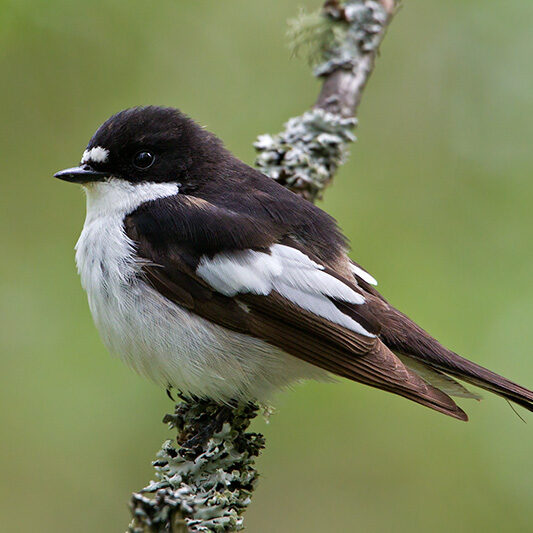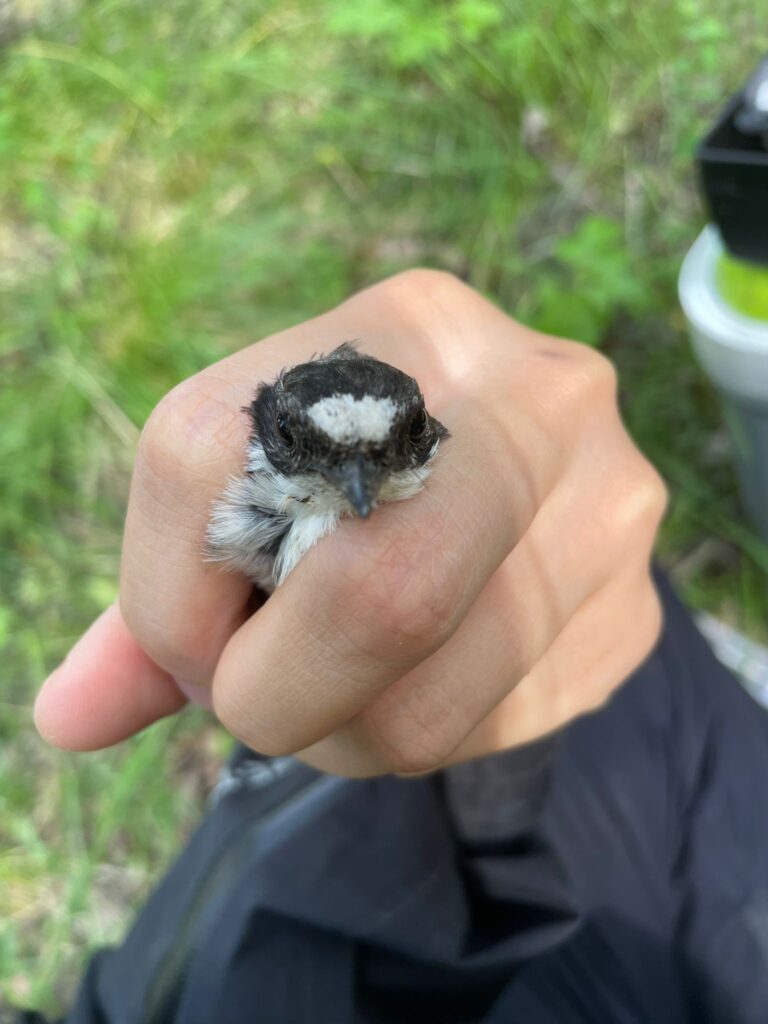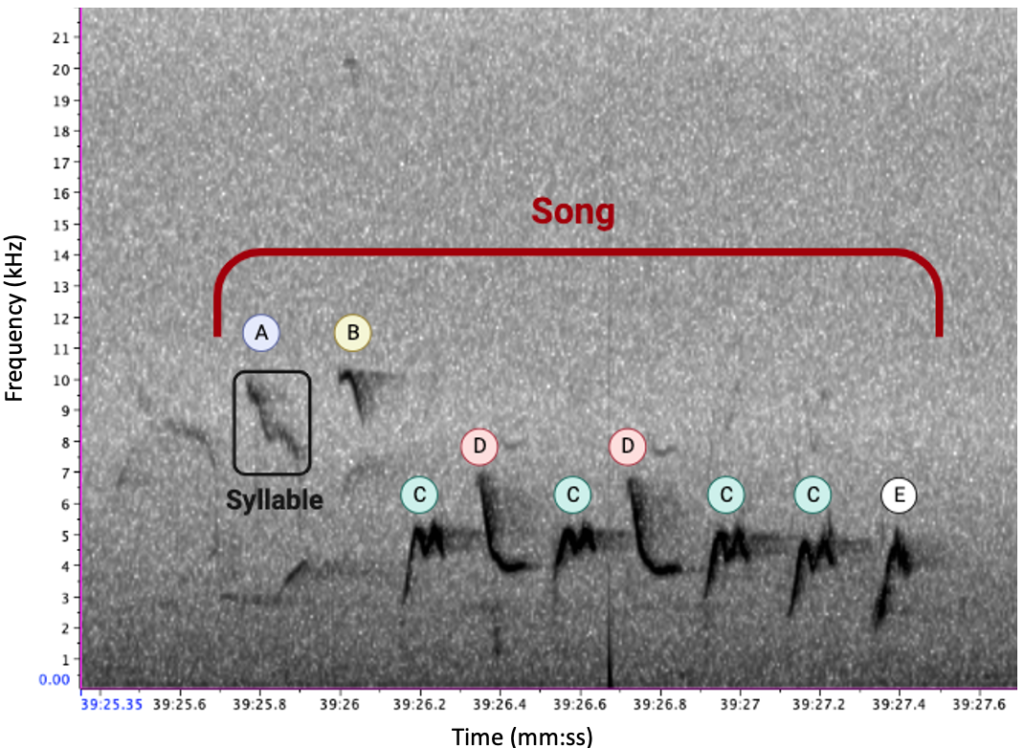This study was conducted at Tovetorp zoological research station (Tovetorps zoologiska forskningsstation) in Sweden. Experimental trials on wild pied flycatcher (Ficedula hypoleuca) males were conducted in the field from May to July 2023, where the species breeds in nest boxes and becomes accessible for long-term monitoring purposes.

Study species
Pied flycatchers are migratory passerine birds that overwinter in west Africa and migrate to northern Europe to breed in natural holes or nest boxes. The males arrive first and compete over nest boxes, the earliest arriving ones tend to be in better physical condition and get the best territories. Songs are produced by the male, especially during the breeding season, to attract the females and deter competitors. Both parents provide parental care to raise their offspring and stay around the same nest box for the breeding season. During their developmental period, the nestlings are fed caterpillars that contribute up to 80 % of their diet.
Field work
Nest box monitoring
During the breeding season, more than 500 nest boxes placed around the research station were monitored manually in the field to locate nests occupied by pied flycatchers. Twenty-five nest boxes occupied by flycatchers were used in this study. The lay date of the first egg was determined based on the number of eggs currently present in the box at the time of the check.

Other male traits
To give an estimate of the male absolute fitness, the brood size was recorded for each breeding male as well as the body mass of the nestlings. The mass, the length of the wings, and the size of the forehead plumage patch of the males were also recorded.
Song recording
Voice recorders were placed below each nest box at the start of the nest building phase and automatically recorded sound around the nest boxes twice every morning.
Habitat quality
Tree density and species diversity were measured at the nest box, at 25 m and 75 m away from the nest box at the four cardinal points. Every tree present within a 5 m radius at the selected points was recorded. For each tree present in the radius, the species, the diameter at breast height (DBH) and the height were measured when possible.

Caterpillar faeces (or frass) were collected to estimate caterpillar abundance using custom made traps placed under the five most common species present in the area: birch, spruce, hazel, oak and pine. The height and diameter of the trees were measured.
Cognitive task
Opaque cylinders were screwed on the entrance of the 25 selected nest boxes when the nestlings were 11 days old. The responses of the parents were recorded using high speed cameras. Each nest box was recorded for 30 min before the cylinder was placed (baseline) and 30 min with the cylinder (trial). The cameras also recorded for 30 more minutes after the removal of the cylinder to ensure the parents return to the nest box to feed the nestlings.

Data analyses
Behaviours
Behavioural data from the detour-reaching task were analysed using ethograms. The duration and frequency of each behaviours were recorded. The time taken (in seconds) for each individual to first establish contact with the cylinder from the first time they were seen on the video was used as a proxy for assessing the boldness of the males. The motivation was also assessed by recording the number of times the males visited the box during the baseline (before the cylinder was placed). A success at the task was defined as the bird fully entering the cylinder so that it was no longer visible on the video. Cylinder tasks are usually conducted in controlled environments where the individuals are given the time needed to succeed. However, in this experiment conducted in the wild, the participants were given a set time with the task which resulted in not all individuals succeeding. After analysing several trials, all individuals were observed following the same pattern when faced with the task. The following step process was used to assess the progression of the males on the task: 1) Perched on the pole; 2) Hovering; 3) Any contact with the cylinder; 4) Perched at the entrance of the cylinder; 5) Inside the cylinder, no longer visible
Song versatility
Song complexity was quantified by measuring its versatility (the proportion of unique syllables per song phrase). Twenty-five songs chosen randomly from different recordings were used for each male to analyse their versatility.

Habitat quality
The height of observed trees was used to make prediction models to estimate the height of trees for which the height could not be calculated in the field. The frass biomass (or nest box productivity) was then calculated for each nest box to give an estimated amount of food available in the habitat of each male. The Shannon Diversity Index was also calculated to assess the tree species diversity around each nest box.